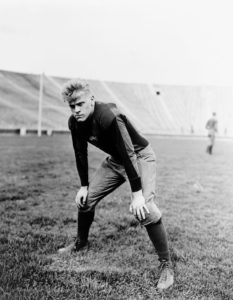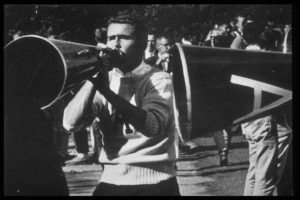-
Halloween
- The Story Behind Halloween – Lesson
- The Story Behind Halloween – Quiz
- Are You Too Old To Go Trick-Or-Treating? – Lesson
- Look out for the Blue Pumpkin – Lesson
- Is the White House Haunted? – Lesson
- Is the White House Haunted? – Quiz
- Mummies Discovered in Egypt – But That’s Nothing to Fear – Lesson
- Salem Witch Trials: When Being Called a Witch Meant Death – Lesson
- Halloween Around the World: It Isn’t Just Costumes and Candy – Lesson
- Halloween Around the World: It Isn’t Just Costumes and Candy – Quiz
-
Thanksgiving
- The Evolution of Thanksgiving – Lesson
- The Evolution of Thanksgiving – Quiz
- The Political Roots of Thanksgiving – Lesson
- The Political Roots of Thanksgiving – Quiz
- Turkey for Thanksgiving – But Why? – Lesson
- Turkey for Thanksgiving – But Why? – Quiz
- This Thanksgiving, Consider Helping the Less Fortunate – Lesson
-
Christmas
-
Easter
- Good Friday: Christ Carried Sin to the Grave – And Left It There – Lesson
- Good Friday: Christ Carried Sin to the Grave – And Left It There – Quiz
- Easter Traditions: From Rabbits to Egg Jarping – Lesson
- Easter Traditions: From Rabbits to Egg Jarping – Quiz
- Easter Monday and Egg Rolling at the White House – Lesson
- Easter Monday and Egg Rolling at the White House – Quiz
-
Federal Holidays and Observances
- New Year’s Day: Just as Political as Anything Else – Lesson
- This Presidents’ Day, Let’s Remember the Weird – Lesson
- Astounding Facts about US Presidents – Lesson
- Astounding Facts about US Presidents – Quiz
- Memorial Day: A Time of Honor and Respect – Lesson
- Memorial Day: A Time of Honor and Respect – Quiz
- From Decoration Day to Memorial Day – Lesson
- From Decoration Day to Memorial Day – Quiz
- Who Was the Poppy Lady, Moina Belle Michael? – Lesson
- Who Was the Poppy Lady, Moina Belle Michael? – Quiz
- The Origins of Flag Day – Lesson
- The Origins of Flag Day – Quiz
- America’s Flag – An Evolved Banner for an Ever-Changing Country – Lesson
- America’s Flag – An Evolved Banner for an Ever-Changing Country – Quiz
- Celebrating the 4th of July – Lesson
- Celebrating the 4th of July – Quiz
- Who Should We Thank for Labor Day? – Lesson
- Who Should We Thank for Labor Day? – Quiz
- Constitution and Citizenship Day – Lesson
- Constitution Day – The First Day of Constitution Week – Lesson
- Constitution Day – The First Day of Constitution Week – Quiz
- The Political Origins of Columbus Day – Lesson
- The Political Origins of Columbus Day – Quiz
- Columbus Day or Indigenous Peoples’ Day? – Lesson
- Columbus Day or Indigenous Peoples’ Day? – Quiz
- Veterans Day: A Day to Honor Those Who Served – Lesson
- Veterans Day: A Day to Honor Those Who Served – Quiz
-
Other Traditions
- Valentine’s Day Love Poems – Lesson
- Love Poems for Valentine’s Day – Lesson
- Who Was St. Valentine? – Lesson
- Who Was St. Valentine? – Quiz
- No Love for Valentine’s Day in the East – Lesson
- No Love for Valentine’s Day in the East – Quiz
- Beware the Ides of March – But Why? – Lesson
- Beware the Ides of March – But Why? – Quiz
- St. Patrick’s Day: A Celebration of the Irish – Lesson
- St. Patrick’s Day: A Celebration of the Irish – Quiz
- May Day: Dancing ‘Round the Maypole – Lesson
- May Day: Dancing ‘Round the Maypole – Quiz
- Cinco de Mayo: Celebrating Mexico’s Victory in Puebla – Lesson
- Cinco de Mayo: Celebrating Mexico’s Victory in Puebla – Quiz
- Mother’s Day: The Anti-War Effort Turned Holiday – Lesson
- Mother’s Day: The Anti-War Effort Turned Holiday – Quiz
- Father’s Day: More Than Just a Day for Ties – Lesson
- Father’s Day: More Than Just a Day for Ties – Quiz
- Presidential Fathers: Responsible for Their Kids and the Country – Lesson
- Presidential Fathers: Responsible for Their Kids and the Country – Quiz
- Proof of the Hanukkah Story Found? – Lesson
- Proof of the Hanukkah Story Found? – Quiz
Astounding Facts about US Presidents – Lesson

Presidents Washington (top), Jefferson (left), Madison (middle), and John Adams (right). (Photo by: Photo12/Universal Images Group via Getty Images)
Odd, interesting, and shocking facts about U.S. presidents.
On this Presidents’ Day, a celebration of the country’s commanders-in-chief, we take a look at some amazing facts you might not have known about our nation’s past leaders.
Thomas Jefferson: During the War of 1812, the British burned down the Library of Congress. Jefferson stepped in and sold the institution his own collection of 6,487 books. He and John Adams were good friends and both died on July 4, 1826. With his dying words, Adams said “Thomas Jefferson survives,” thinking he had beat his buddy to the grave – unaware Jefferson had passed only hours earlier.
James Madison and George Washington are the only presidents who signed the Constitution. Madison has the distinction of being the shortest president at five feet four inches. He was also the first graduate student of Princeton University.
John Quincy Adams must not have been too shy. As part of his morning exercise routine, he liked to go skinny-dipping in the Potomac River.
Andrew Jackson was no stranger to fighting and duels. In fact, he fought about 100 duels, mostly to defend his wife’s honor. In 1813, during a fight, he was shot in the arm by Missouri Senator Thomas Hart Benton. On another occasion, he was shot in the chest during a duel but still was able to remain on his feet to win the fight. The bullet could not be removed and remained in his chest for 40 years. His fighting skills may have helped him during an assassination attempt on January 30, 1835 (he was the first president to experience one). The assailant shot at the president twice but the guns misfired. Jackson was so irate over it he clubbed the would-be assassin several times with his walking cane.
Martin Van Buren was the first president born a citizen of the United States and the only one for whom English was a second language. His native language was Dutch. He carried the nickname “Old Kinderhook” because he was from Kinderhook, New York, and some theorize that the term “O.K.” comes from the O.K. clubs that used to support his campaign.
James Polk or “Young Hickory” had to have surgery to remove kidney stones at the young age of 17 – without anesthesia since it hadn’t been invented yet. He suffered through the procedure drinking brandy and was awake the whole time.

The second inauguration of Ulysses S. Grant. (Photo by: Sepia Times/Universal Images Group via Getty Images)
Franklin Pierce, while in office, was arrested for running over a woman with his horse. Due to a lack of evidence, the charges were dropped. While he may have enjoyed his “Handsome Frank” nickname, he was not too fond of the other, “Fainting Frank.” He received that less than flattering moniker during the Mexican-American War. A brigadier general, he received a groin and knee injury from being thrown against his horse’s pommel. Although he only passed out for a brief time due to the pain, the nickname stuck.
Abraham Lincoln and Lyndon B. Johnson were the tallest presidents at six feet four inches. Lincoln liked to wrestle and, during his youth, he was defeated only once out of about 300 matches. He got into the Wrestling Hall of Fame with the honor of “Outstanding American.” He liked to store papers and other goodies beneath his tall hat.
Ulysses S. Grant was born Hiram Ulysses Grant but a clerical error at the military academy, West Point, had him nervous that they would reject him – so he immediately changed his name. He hated being in the military even though his victories during the Civil War are what gave him the popularity to become president. After resigning from the military he tried many business ventures that all failed. He had to resort to selling firewood on the street to support his family. Just before he died in 1885, Grant’s good friend Mark Twain published his memoirs which sold about 300,000 copies.
Rutherford B. Hayes fought in the Civil War and was the only president to be wounded in the conflict – four different times.
James Garfield was ambidextrous and could write Greek with one hand and Latin with the other – at the same time.

Gerald Ford on the football field (Photo by © CORBIS/Corbis via Getty Images)
Benjamin Harrison was the first to experience electricity in the White House. However, the unfamiliar technology frightened him and he would never turn on the light switches himself for fear of being electrocuted.
William McKinley had an Amazon parrot named Washington Post whose job was to be the White House greeter. McKinley would whistle the first few notes of “Yankee Doodle Dandy” and Post would finish the rest. The president was a bit superstitious and always wore a red carnation on his lapel for good luck. In 1901, he gave the flower to a little girl and seconds later he was shot by an assassin. He died eight days later.
During a speech in Milwaukee, Theodore Roosevelt was shot in the chest by an assassin. He continued on, saying to the crowd, “I don’t know whether you fully understand that I have just been shot. I give you my word, I do not care a rap about being shot; not a rap.” He finished the 90-minute speech with the bullet still in his chest.
Calvin Coolidge liked to play practical jokes. Sometimes he would press all the service buttons in the Oval office, which sent ringing bells through the White House to alert staff that he needed assistance. He would then hide and watch everyone run around trying to figure out what they were supposed to do.

George W. Bush in his cheerleading days. (Photo by Brooks Kraft LLC/Sygma via Getty Images)
Gerald Ford turned down offers to play football for the Green Bay Packers and the Detroit Lions because he wanted to attend Yale University’s law school; he took a job coaching there instead. During college, he worked as a fashion model.
George H.W. Bush was flying over Japan when he was shot down, during World War II. He and another crewman were able to bail out but another man was not as fortunate and went down with the aircraft. Bush was rescued off the coast of Chichi-Jima.
George W. Bush was captain of the cheerleading team at Phillips Academy in Andover, MA, during his senior year of high school.